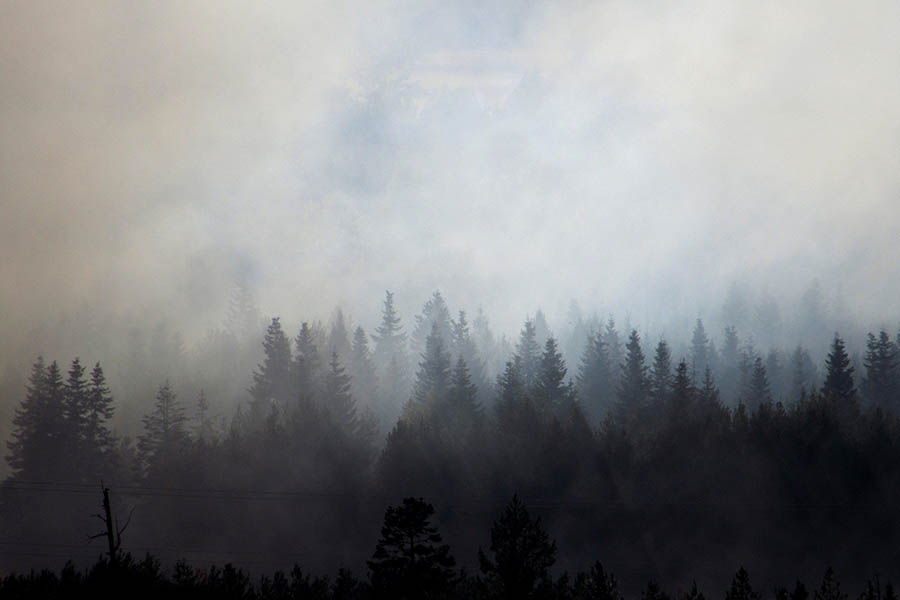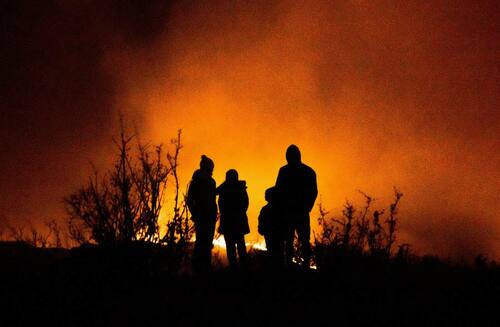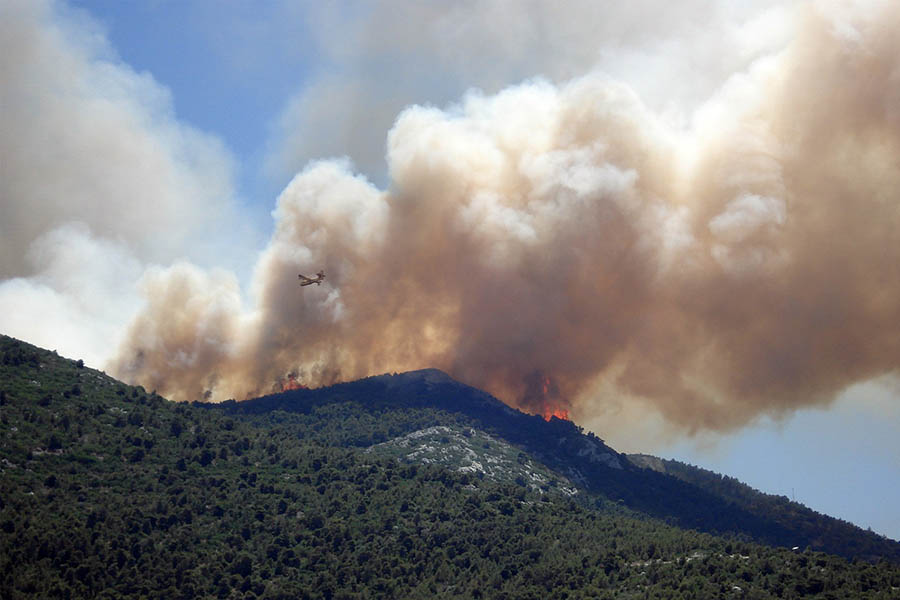The After-Effects of Wildfires in California are Wide-Ranging
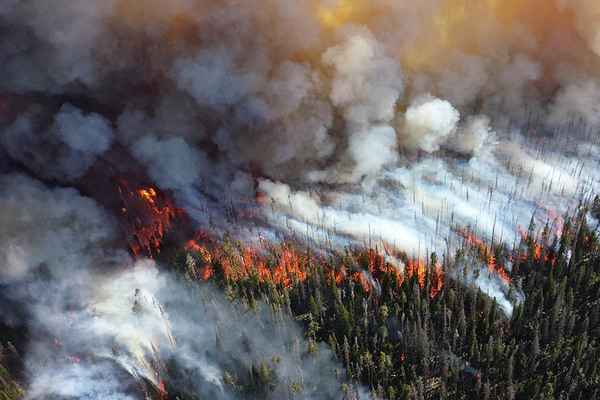
Introduction
The destructive effects of wildfires on wildlife and landscapes are severe and well-documented. Wildfires, characterized by rapid, extensive, and often devastating spread through areas with flammable vegetation, can be triggered by both human actions and natural occurrences. These fires not only consume vast amounts of natural and human resources but also lead to long-term ecological changes, disrupting habitats and altering the landscape's natural regeneration cycle. The recovery for affected ecosystems can take years, requiring careful management and restoration efforts.
The Environmental Impact of Wildfires
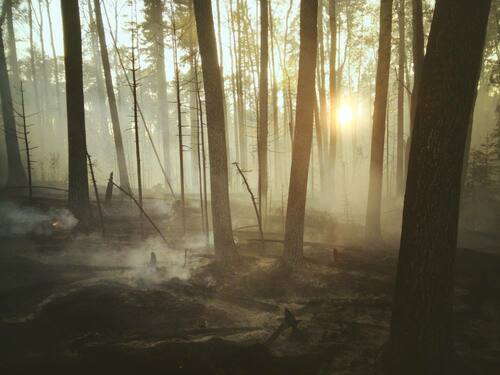
A Smoldering Forest Floor - Photo by Landon Parenteau on Unsplash
Wildfires spread quickly and can engulf large areas in a short period, making them devastatingly destructive. The damaging effects of a wildfire include:
Disruption of Carbon Removal
When these fires burn through forests, they consume the vegetation that absorbs CO2 from the atmosphere. The loss of these green spaces means less CO2 is captured, contributing to increased atmospheric levels of this greenhouse gas. Furthermore, the carbon stored in trees is released back into the atmosphere as CO2 during a fire, exacerbating the impact on climate change.
Biodiversity Losses
As these fires sweep through habitats, they not only destroy plant life but also kill or displace countless animal species. The sudden elimination of flora and fauna disrupts food chains and local ecological balances, leading to a reduced variety of life in the area. Recovery can be slow, as some species may not return to the area, permanently altering the biodiversity and ecosystem structure.
Soil Erosion is Exacerbated
When fires burn away grass, shrubs, and trees, the bare soil is left exposed to wind and rain. This leads to increased runoff during rainstorms, as there are no plant roots to hold the soil in place. The resulting erosion not only degrades land quality but also can lead to further environmental issues, such as sedimentation in waterways, which affects water quality and aquatic habitats.
Smoke from a Wildfire Partially Obscures a Forest
Air And Water Pollution Levels Increase
Large-scale burning of vegetation and other organic materials releases a variety of pollutants into the atmosphere. These airborne contaminants can degrade air quality, affecting human health and the environment far beyond the immediate area. The runoff from burned areas often carries ash and pollutants into waterways, disrupting water quality and affecting aquatic life and water resources used by communities downstream.
Increased Susceptibility To Additional Natural Disasters
The destabilization of soil by fires increases the likelihood of mudslides and floods, especially during heavy rains. As the protective ground cover is burnt away, the bare soil is less able to absorb rainfall, leading to greater runoff and erosion. This sequence of events can lead to catastrophic secondary effects in areas already devastated by fire, compounding the challenges of recovery and restoration.
The Impact of Wildfires on Human Health and Infrastructure
Adverse Effects On Health
Wildfires pollute the air with smoke and particles of ash, causing health problems for those in the affected areas. Common symptoms include breathing issues, respiratory infections, headaches, dizziness, and eye irritation. Smoke from wildfires can penetrate deep into the lungs, potentially worsening chronic heart and lung diseases and increasing susceptibility to infections. The psychological stress from dealing with wildfires, including displacement and loss, can lead to long-term mental health issues, underscoring the extensive health implications of these natural disasters.
Loss of Human Lives
Ignoring evacuation orders during wildfires can tragically lead to loss of life, as many people stay in their homes under the belief that the fire will not reach them. This decision proves fatal when wildfires, which can spread rapidly and unpredictably, engulf areas that are not evacuated in time. Over the years, the deadliest wildfires have claimed more than 1,000 lives, a sobering reminder of the importance of heeding evacuation warnings. The rapid spread of these fires leaves little time for residents to react once the danger becomes imminent, underscoring the critical need for timely evacuation to ensure safety.
Economies Incur Heavy Losses
A wildfire devastates everything that it consumes, with large areas of valuable agricultural or forest land being lost in the fire. Farmers lose crops and livestock and suffer a great economic setback. Those dependent on forestry also suffer heavy losses. Although these economic sectors are directly affected by the fire, other private properties, businesses, and communities also experience the adverse effects of wildfires. Direct costs associated with firefighting and restoration activities also consume vast sums of money.
Damage to Historic Sites
When wildfires engulf areas containing historical sites or archaeological remains, the impacts extend beyond immediate destruction. These fires can destroy vital pieces of local identity and heritage, causing irrevocable losses. The removal of protective vegetation exposes these sites to harsh environmental conditions. Wind and water erosion can then accelerate the degradation of these invaluable sites, threatening valuable pieces of local history.
Water is Dropped from a Plane onto a Burning Hillside
Conclusion
As a dedicated tree care company based in San Francisco, Arborist Now understands the significant and wide-ranging after-effects of wildfires on our environment and community. Protecting and restoring our local ecosystems after such devastating events is crucial. We are committed to providing expert care and rehabilitation for trees affected by wildfires, ensuring they continue to thrive and enhance our urban landscape. Together, we can help mitigate the impacts of wildfires and preserve our cherished natural heritage for future generations. Contact us today to receive the highest level of expertise in mitigating wildfire damage to your property and restoring it to its former beauty.
Originally published on September 6, 2020.

